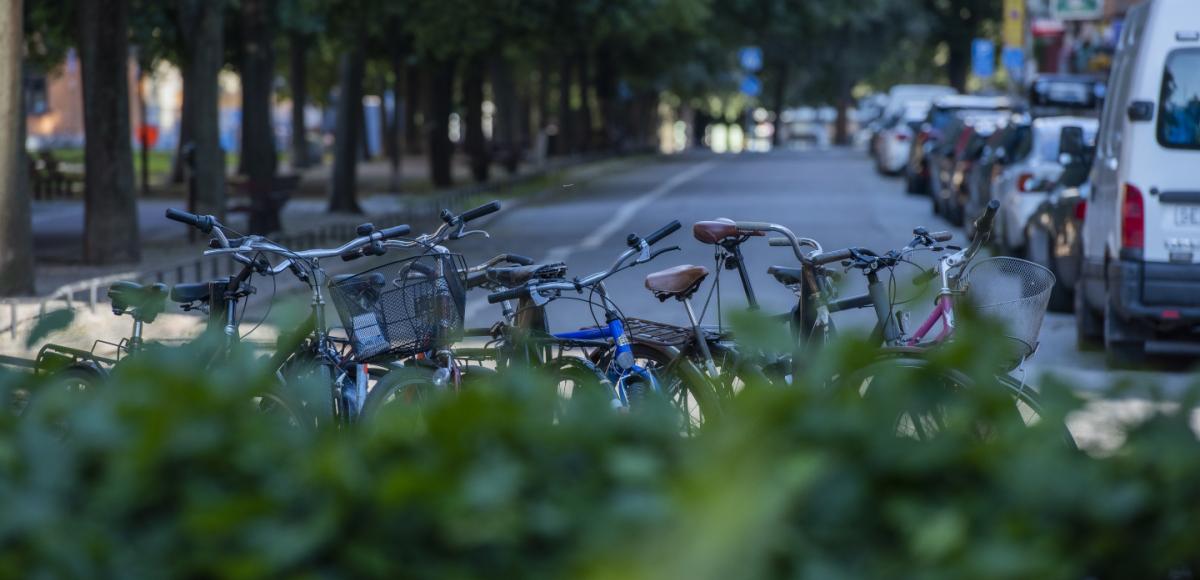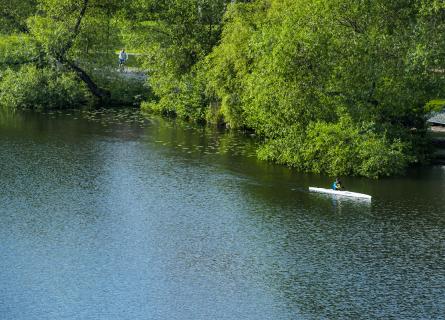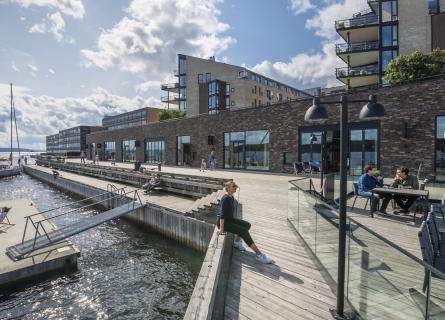
Our ten year challenge
Future Cities Insight #8 Our ten year challenge
By now, you probably know that we don't care much about making history. We care about making future. That's why our #tenyearchallenge isn't about looking back - it's about looking forward.
The year is 2029, it's February and the city is covered in a blanket of white, glittering snow. There is no grey, grimy slush or dirt in the city of the future; the city is a place for playing in the snow, for motion, spontaneous meetings and warmth – we lift our gazes and look each other in the eye.
There is one year left until the UN's Sustainable Development Goals are to be fulfilled. The world is united: the previous ten years have seen irregular cycles of storms, rain, drought, heat and cold. This has forced humankind to come together and in humility face the fact that the Earth is simply on loan.
When the world finally united to phase out fossil-free fuels and chemicals, the development was more rapid than anyone could have imagined. Individuals, the private sector, municipalities and politicians have implemented major changes over a ten-year period. When this work did get underway, the majority found the transition to be both rewarding and enjoyable. After decades of living with the imminent threat of ecological collapse, the climate has been secured for future generations and society is infused with optimism. Increased faith in the future has seen a reduction in mental illness, especially among young people.
Many areas of the globe that it was once feared climate change would render uninhabitable have continued to support well-functioning societies. A mostly plant-based diet is the new norm and a reduction in domestic animals has halted global deforestation, with wildlife populations beginning to recover. Global plans are underway to further protect natural environments and nations around the world are competing to trap the most carbon dioxide and plant the largest carbon sinks in the form of forests, with the long-term aim of stabilising the level of greenhouse gases in the atmosphere. An extensive public education campaign has left local populations well-prepared to survive natural disasters and meet the challenges of the extreme weather that, despite current efforts, climate change has brought with it.
Technological development and changing lifestyles can be seen everywhere. Driving a petrol or diesel vehicle in the city is as unthinkable as lighting up a cigarette in a restaurant. Goods deliveries and unavoidable journeys are completed using electricity, while increased cycling and reduced vehicle traffic has led to more exercise and cleaner air, improving public health. Decreased noise pollution means that birdsong can be heard and the scent of flowers and trees contributes to the general sense of wellbeing. Urban spaces have become more family-friendly and parents increasingly choose to raise their children in the city. Restaurants and leisure activities thrive in walking and cycling cities. Trade is geared towards recycling, sharing and reuse..
Renewable energy is apparent everywhere in the form of biomass plantations on the outskirts of urban areas, as well as solar cells and wind turbines on rooftops and waste ground. Increased tree planting, urban woodlands, pocket parks and green walls have all contributed to increasing the uptake of carbon dioxide and improved urban climate adaption. Urban agriculture has led to a significant increase in homegrown and local produce. This increased level of self-sufficiency has made society more resilient in times of occasional insecurity in the food supply chain. More urban agriculture and meadowland has attracted more insects, bees and birds to the city. A weekend treat for families is a visit to one of the many urban farms that have sprung up.
People work less and have more time to live sustainable lives. Working hours are flexible and many people work from home, in cafés or from the shed on their allotment, reducing office space and commuting.
Staycations spent enjoying urban nature and parks have become the norm and the increasing interest in hiking and skiing has caused logistical headaches for Sweden's mountain resorts. More nature reserves and wild animals have made domestic safaris in Sweden increasingly popular. Those young people who have the opportunity set off on the grand tour, circling the world by sailboat, ship and train.
This is what we believe that 2029 will look like. What do you think - and want - your 2029 to look like?
Helena Paulsson and Fanny Rading Heyman



